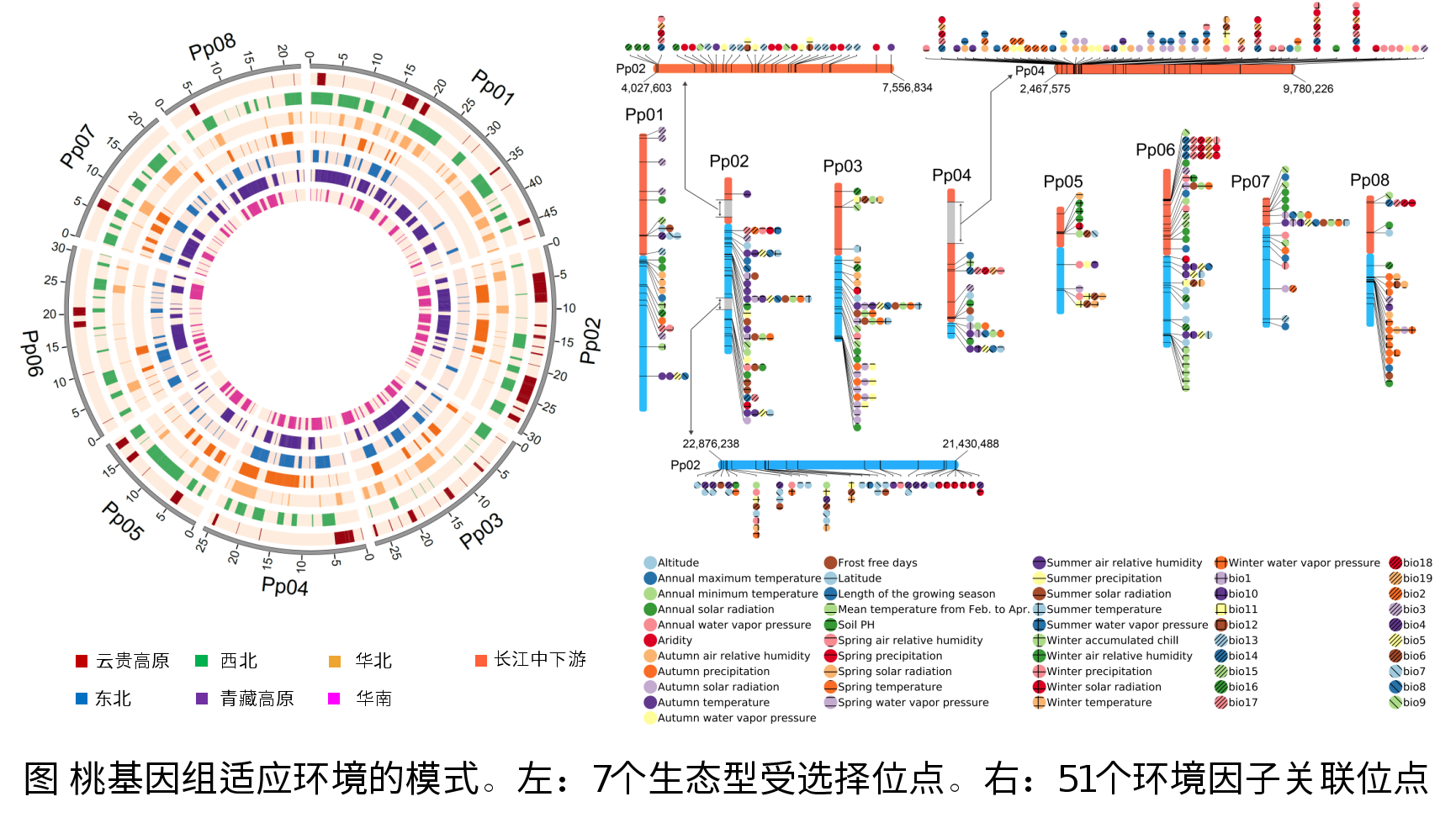Peach is the main fruit tree species in the world. Peach originated in China, with strong adaptability and wide distribution. Since thousands of years ago, there was a goes said that "peaches and plums are all over the world", which is a good material for studying plant environmental adaptability and is also considered as a model tree species for studying Rosaceae fruit trees. In the early morning of March 10th, Genome Research, an internationally renowned genomics journal, published a genetic analysis of the impact of many environmental factors on peach genome led by Wang Lirong, Zhengzhou Fruit Research Institute, Chinese Academy of Agricultural Sciences, which gave genetic meaning to "Peach and Plum are all over the world" and helped breeders to establish a new model for adaptive improvement of varieties in response to climate change.
Using the genomic data of 263 peach germplasm resources, the map of "SNP+InDel+SV" multi-type variation groups of local peach varieties and wild related species was constructed. Through the analysis of genetic relationship and population structure, it was found that local peach varieties and wild related species can be divided into seven ecotypes, which are highly consistent with geographical distribution. Through mantel test of environment, genome and geographical distribution, it was found that environment is the main driving force of genetic distribution. Genome-wide selection analysis and environmental association analysis (GWEAS) were carried out, and 2092 selected intervals and 2755 environmental factor association sites were found, which systematically and comprehensively revealed the genome model of peach adapting to different environmental conditions. Based on the above results, the key genes controlling cold resistance, plateau adaptability and flowering latitude adaptability of peach and their variation mechanism were discovered. The genetic basis of sugar accumulation in peach fruit induced by drought and the adaptive evolutionary genetic mechanism of pulp color were expounded. Through long-term monitoring of phenological period for more than 30 years, it was found that the flowering period of peach was affected by global warming 10 days earlier than that in 1980s, and the candidate key gene LNK1 of peach in response to climate change was identified. The research results provide an important reference for breeding new varieties with high quality and wide adaptability and coping with climate change, and help to cope with the impact of global warming on agricultural production.
This paper is one of the phased achievements of the "1K Peach Genome" plan of the Peach Germplasm Resource Team of Zhengzhou Fruit Research Institute. Before that, the team has made important progress in the variation characteristics of peach genome, the modification and domestication of peach genome by artificial selection, and the correlation analysis of agronomic traits. This study mainly reveals the influence of natural selection on peach genome and the genetic basis of peach adaptation to different environments. So far, the team has made initial achievements in the basic research on the formation of important agronomic characters and environmental adaptability of peach, and will continue to carry out related work around these two aspects during the “14th Five-Year Development Plan”.
The first author of the paper are Dr. Li Yong and Dr. Cao Ke from Zhengzhou Fruit Research Institute, and the corresponding author is Prof. Wang Lirong from Zhengzhou Fruit Research Institute, CAAS and Professor ZhangjunFei from Boyce Thompson Institute of Cornell University, United with four domestic and foreign institutions, including Huazhong Agricultural University, Cornell University, Shenzhen Institute of Agricultural Genomics, CAAS and Spanish Institute of Agricultural Food and Technology. The research was supported by the Science and Technology Innovation Project of Chinese Academy of Agricultural Sciences (CAAS-ASTIP-2020-ZFRI-01), the General Project of National Natural Science Foundation of China (31572094), the Crop Species Protection Project (2016NWB041) and the materials anddata of the National Horticultural Germplasm Resource Center.
URL: http://www.genome.org/cgi/doi/10.1101/gr.261032.120

The adaptation pattern of peach across genome
By Li Yong(liyong02@caas.cn)
